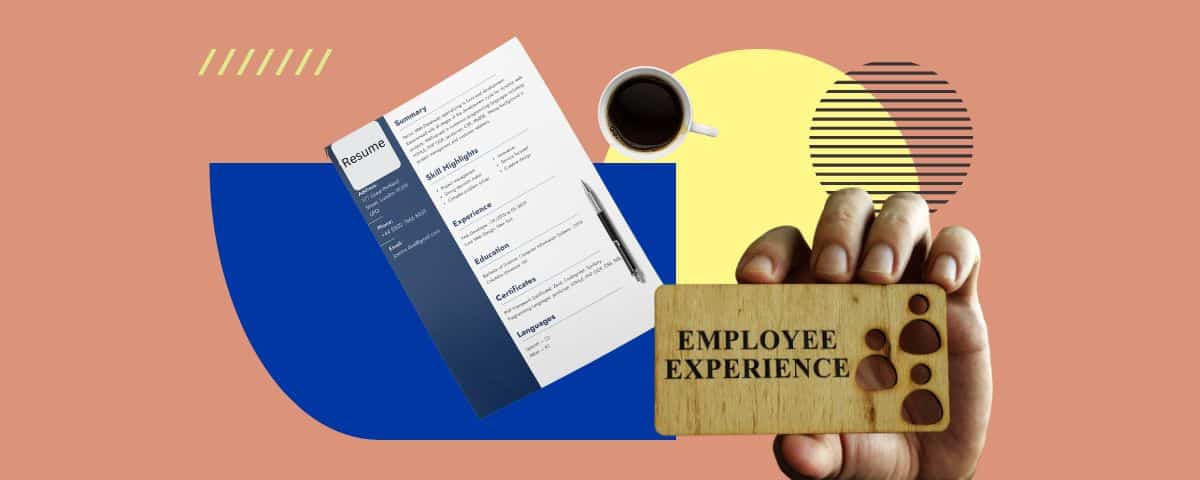

Quick Summary
If you’ve ever struggled to present your work history in a way that truly reflects your skills and achievements, you’re not alone. Crafting the experience section of your resume isn’t just about listing job titles—it’s about telling a compelling story of your professional journey. Whether you’re a fresher showcasing internships or a seasoned employee highlighting leadership roles, learning how to add experience in resume can make all the difference in capturing a recruiter’s attention.
In today’s fast-paced job market, your resume must do more than just inform—it should impress. The experience section is where you prove your value by detailing what you’ve done, how you did it, and the impact it created. In this guide, we’ll break down everything you need to know about how to add experience in resume, from choosing the right format and wording to real-life examples that help your resume stand out.

The resume’s work experience section details your employment history, highlighting your roles, the companies you’ve worked for, and your key responsibilities and achievements. This section demonstrates your career progression, showcases your skills in action, and provides evidence of your qualifications for the position you’re applying for.
Employers rely heavily on the work experience section to assess candidates’ suitability for a role. It offers a snapshot of your professional journey, illustrating how your past roles have prepared you for the challenges of the new position. A well-crafted work experience section can:
The experience section is more than just a list of past jobs. It’s a narrative of your career journey—your responsibilities, achievements, and contributions.
Here’s why it’s critical:
In short, it turns your resume from a list of qualifications into proof of competence.
The placement of your experience section depends on the resume format you use. Here are the main types:
Best Practice:
Unless you have a strong reason, use the reverse-chronological format with a clearly titled “Professional Experience” section.
Each role you list in your resume’s experience section should include the following elements:
Bonus Elements:
Remember: Focus on results, not just responsibilities.
Digital Marketing Executive
ZypherSoft Pvt. Ltd, Mumbai
Feb 2022 – Present
HR Intern
Aditya Birla Group, Pune
June 2023 – August 2023
Start each bullet point with a dynamic verb:
Avoid weak phrases like “responsible for” or “worked on.”
Instead of writing:
“Handled client queries”
Write:
“Resolved 30+ daily client queries, improving customer satisfaction score by 18%.”
Quantify results to show your impact:
Use keywords from the job posting. If the job calls for “email marketing,” mention that exact phrase if it applies to your experience.
If you’re a fresher, your resume can still shine. Include experience-equivalent entries such as:
Even unpaid or virtual internships show real-world exposure.
Especially group or final-year projects with defined goals and outcomes.
Anything from building a portfolio website to tutoring online.
Demonstrates leadership, responsibility, and initiative.
Like being a club president or college fest coordinator—highlight transferable skills.
Technical Volunteer
Google Developer Student Club, Chennai
Sep 2022 – Mar 2023
Pro Tip: Use a functional resume format to highlight skills first, followed by project-based experience.
If you’re switching industries, your experience can still be relevant.
E.g., Communication, leadership, analytical thinking, budgeting, CRM tools, Excel
Include online courses, bootcamps, or workshops relevant to your new domain.
Use a combination resume that leads with skills and accomplishments.
Retail Sales Manager
Reliance Trends, Bangalore
March 2020 – June 2023
Your resume should evolve as you grow professionally.
Keep a master resume document with every detail. Customize a new version for each job you apply to.

Operations Analyst
Infosys BPM, Hyderabad
Aug 2021 – Present
Intern – Market Research
Kantar India, Mumbai
May 2020 – July 2020
Crafting the experience section of your resume is more than just a formality—it’s your opportunity to show potential employers the real value you bring to the table. You can turn a simple list of past roles into a powerful narrative of your career growth using action-driven language, quantifiable achievements, and a clean, professional format.
Now that you know how to add experience in resume effectively, you’re one step closer to making a lasting impression. Whether you’re applying for your first job or aiming for a leadership position, a well-written experience section can open doors and set you apart. So, take the time to refine your resume, tailor it for every role, and let your journey and accomplishments speak for themselves.

List your job title, company, location, and dates. Add 3–5 bullet points describing responsibilities and achievements using action verbs and metrics.
Create a dedicated “Experience” section. For each role, include job title, company name, location, dates, and bullet points highlighting your duties, achievements, and skills, written with precise action verbs.
Mention roles like “Account Executive” or “Accounts Assistant.” Highlight tasks such as budgeting, ledger management, GST filing, and financial reporting with measurable outcomes—tailor content to match the job description.
Use phrases like “Professional Experience,” “Work Experience,” or “Relevant Experience” as section headers. Describe each role using past-tense action verbs and use metrics or project outcomes to show your impact.
List each job with title, company, duration, and 3–5 bullet points. Focus on results, use action verbs like “led” or “managed,” and include tools or methods used. Keep formatting consistent.
Briefly mention your current or past job titles, key responsibilities, and significant achievements.

Authored by, Rashmi Jaisal
Career Guidance Expert
Rashmi is a Content Strategist who creates research-driven content focused on education, higher education policy, and online learning. She brings an energetic blend of expertise in technology, business, and literature, sparking fresh perspectives and engaging narratives. Outside of work, she’s a passionate traveler who enjoys journaling and curating visual inspiration through Pinterest boards.
Editor's Recommendations
Chegg India does not ask for money to offer any opportunity with the company. We request you to be vigilant before sharing your personal and financial information with any third party. Beware of fraudulent activities claiming affiliation with our company and promising monetary rewards or benefits. Chegg India shall not be responsible for any losses resulting from such activities.
Chegg India does not ask for money to offer any opportunity with the company. We request you to be vigilant before sharing your personal and financial information with any third party. Beware of fraudulent activities claiming affiliation with our company and promising monetary rewards or benefits. Chegg India shall not be responsible for any losses resulting from such activities.